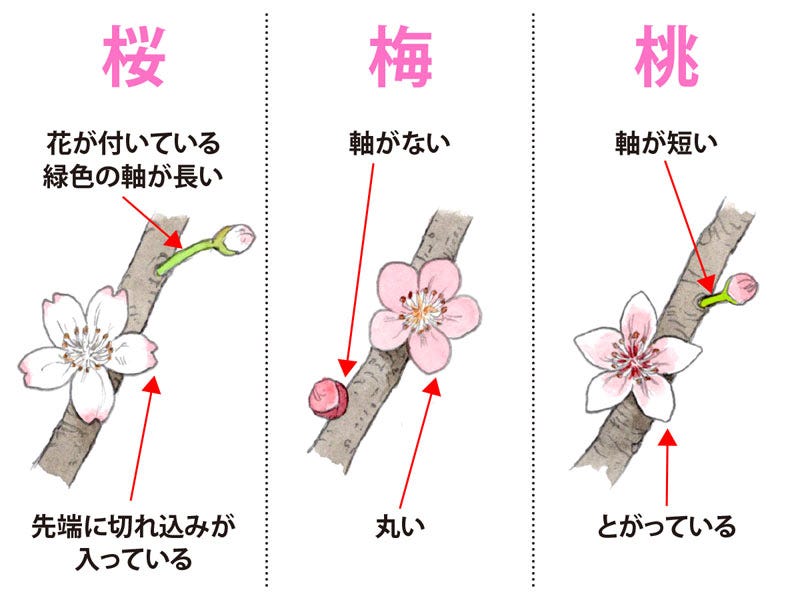When I first started learning Japanese, my textbook introduced basic nouns through the simple question: "Is this a (insert noun of your choice)?" Hold up a pen, ask "Is this a pen?" and get a yes or no answer. Straightforward enough. But then came this curveball:
"それは梅ですか。桜ですか。" ("Is that there [near you] a plum blossom? Or a cherry blossom?")
Why so challenging? The distinction isn't always obvious, yet it's surprisingly useful to know how to ask.
Ume (梅, plum blossom) and sakura (桜, cherry blossom) both announce spring's arrival in Japan, and both decorate parks and temples with delicate pink and white petals. I've confused them countless times myself, but I've picked up some telltale differences.
1885 Woodblock print by Tsukioka Yoshitoshi, series ’ Courageous Warriors (Yoshitoshi musha burui)’, print no. 15; Kurō Hangan Minamoto Yoshitsune and Musashibō Benkei under a cherry tree.
Look at the petals up close – ume's are small and perfectly round, while sakura's have that little notch at the tip, creating a subtle heart shape. From a distance? Check how they grow: ume flowers sprout directly from branches with barely any stem, appearing somewhat scattered, while sakura blossoms gather in clusters on long stems, creating those dreamy, billowing displays.
My favourite way to identify ume? Close my eyes and breathe deeply. Ume's bold, sweet perfume fills the air, while most sakura varieties remain virtually scentless – nature's little joke on our expectations.
Timing helps too. Ume jump-starts spring in February through mid-March, while sakura follows later, typically from late March into April. In Tokyo this year, forecasts predict sakura's first appearance around March 22, reaching full display by March 30.
Credit: picture book; Hasegawa Setsuko (text) and Yazama Yoshiko (illustration): “Sakura” published by Fukuinkan.
And of course sakura gets the spotlight in Japan, with hanami picnics drawing crowds celebrating beneath trees that bloom for just a week before shedding their petals. But ume held the historical crown – ancient poetry collections like Man'yōshū feature twice as many ume poems as sakura ones. Spots like Yushima Tenjin and Kairakuen honour ume with dedicated festivals, though they've never reached the nationwide fervour of cherry blossom season. This article is too late to catch the 2025 festivals, but I shall up-date it as soon as the dates for 2026 are announced.
Credit: Weather News (from left to right - sakura, ume and momo (peach)
For anyone hoping to catch spectacular ume displays around Tokyo next year, I'd recommend the Imperial Palace East Gardens' Bairinzaka (Plum Tree Hill), or Koganei Park with its impressive 90 varieties. There is also Kameido Tenjin Shrine, where 300+ ume trees create a magnificent spectacle, accompanied by a festival running February through March. My personal favourite is Yushima Tenjin with its nighttime illuminations.
(There are still some ume in bloom today, but if you want to see an entire garden - I recommend going up North - dates for 2025 are published here as they happen)
Now when someone wonders, "Is this plum or cherry?" I understand their confusion. Each flower carries its own story and charm – inviting us to stop, notice, and enjoy their brief but magnificent appearance.
PS: if you want to know more about cherry blossoms, check out Abe Naoko’s “The Sakura Obsession: The Incredible Story of the Plant Hunter Who Saved Japan's Cherry Blossoms“






